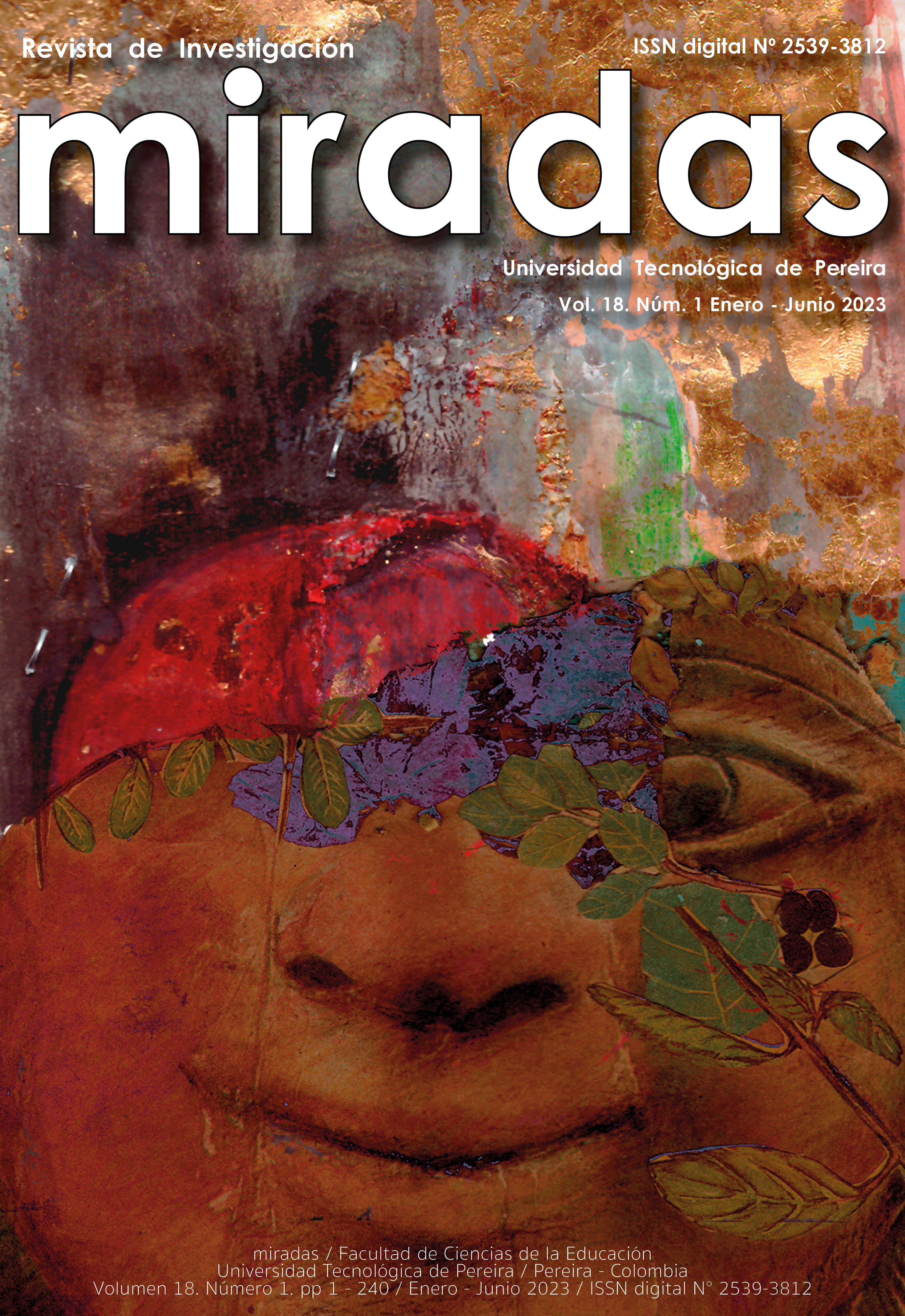Violence and women in the print press, an analysis based on the gender and framing theory
DOI:
https://doi.org/10.22517/25393812.25226Abstract
This research analyzes and categorizes the types of frames provided by the newspaper La Patria in the news related to violence against women during the year 2021. For the present case, a quantitative nature research was carried out of 186 news, where hypotheses were established and units of analysis were used such as keywords, references, descriptions and semantic structures. In this research, the main results were the visibility and informative importance given to violence against women, the negative and little reflective connotation of the news, the interaction between violence, rights and repetitive conceptual frameworks as an unfavorable representation of women in the press and the frames built mainly from the merely informative, expository and uncontroversial purpose of violence against women in the newspaper La patria.
Downloads
References
Alban, G. P. G., Arguello, A. E. V., & Molina, N. E. C. (2020). Metodologías de investigación educativa (descriptivas, experimentales, participativas, y de investigación-acción). Recimundo, 4(3), 163-173.
Alcaldía de Manizales, Secretaría de las Mujeres y Equidad de Género. (2021). Resolución 255 del 2021. Tomado de: https://manizales.gov.co/inicio/secretaria-de-las-mujeres-y-equidad-de-genero/
Álvarez Risco, A. (2020). Clasificación de las investigaciones. Universidad de Lima, Facultad de Ciencias Empresariales y Económicas.
Amadeo, B. (2002). La teoría del Framing. Los medios de comunicación y la transmisión de significados. Revista de comunicación.
Amparán, C. (2012). La teoría del framing: Un paradigma interdisciplinario. Acta sociológica, (59), 77-101.
Armentia, P. G., & Conde, M. R. B. (2009). Género y medios de comunicación: un análisis desde la objetividad y la teoría del framing. Fragua.
Azcárate, T., Bartís, M. E., & Werthein, S. (1999). Tensiones feministas: Resignificando lo político. Anuario de Hojas de Warmi, (10), 103-113
Bateson, G. (1972). A Theory of Play and Fantasy, en Steps to an Ecology of Mind. Collected Essays in Anthropology, Psychiatry, Evolution, and Epistemology, Ballantine Books, New York (1aed., 1954), p. 214.
Burch, S. (2007). Género y comunicación: la agenda de las mujeres en comunicación para el nuevo siglo. Agencia Latinoamérica de Información ALAI.
De la Fuente, M., Muñiz, C., Igartua, J. J., & Otero, J. A. (2013). La imagen de la inmigración en los informativos televisivos: algo más que noticias. Cuestión de imagen: aproximaciones al universo audiovisual desde la comunicación, el arte y la ciencia. Salamanca. 215-240.
Entman, R. (1993). Framing: toward clarification of a fractured paradigm. Journal of Communication, 43 (3), 51-58.
Everbach, T. (2017). Monica Lewinsky and Shame: 1998 Newspaper Framing of “That Woman.” Journal of Communication Inquiry, 41(3), 268–287.
Javid, M. A., Frishman, J., & Kasten, M. M. (2018). Constructing Life Narratives: The Multiple Versions of Maryam Jameelah’s Life. Leiden University.
Gamson, W. A. (1989). News as framing: Comments on Graber. American behavioral scientist, 33(2), 157-161.
Garcia, M.S. (2017). La representación de la violencia de género en la prensa gráfica. Descentrada. Revista interdisciplinaria de feminismos y género, 1 (2): e025.
Jaworska, Sylvia & Krishnamurthy, Ramesh. (2012). On the F word: A corpus-based analysis of the media representation of feminism in British and German press discourse, 1990–2009. Discourse & Society 23. 401-431.
Lakoff, G. (2014). The all new do not think of an elephant! Know your values and frame the debate. Chelsea Green Publishing.
López Rabadán, P., & Vicente Mariño, M. (2013). Propuestas de consolidación teórica y analítica para los estudios de framing en la investigación sobre comunicación política. Estudios sobre Comunicación Política. Libro del año 2012, 239-259.
Minervini, M., & Pedrazzini, A. (2004). El protagonismo de la imagen en la prensa. Revista Latina de Comunicación Social, 7(58), 1.
Neuendorf, K. A. (2017). The content analysis guidebook. Sage.
Pan, Z., y Kosicki, G. (2001). Framing as a strategic action in public deliberation, en Reese, Stephen; Gandy, Oscar, y Grant, August E. (eds.), Framing Public Life, Lawrence Erlbaum, Mahwah (New Jersey), pp. 36-66.
Plaza, J. F., & Delgado, C. (Eds.). (2007). Género y comunicación (Vol. 303). Editorial Fundamentos.
Pride, R.A. (1995) How activists and media frame social problems: critical events versus performance trends for schools" political communication, 12: 5-26
Reese, S. D., & Lee, J. K. (2012). Understanding the content of news media. The SAGE handbook of political communication, 253-263.
Rizzotto, C. C. (2013). ¿Quinto poder? Características, objetivos y estrategias discursivas dos observatorios feministas de media. 292 f. Tese (Doutorado em Comunicação e Linguagens) - Universidade Tuiuti do Paraná, Curitiba.
Rodríguez, M. P., Pando-Caneli, M. J., & Zeberio, M. B. (2017). ¿Generan estereotipos de género los medios de comunicación?: reflexión crítica para educadores. Universidad de Deusto.
Sadaba-Garraza, T., Rodríguez-Virgili, J., & La-Porte Fernandez-Alfaro, T. (2008). La teoría del framing en la investigación en comunicación política.
Sampieri, R. H. (2018). Metodología de la investigación: las rutas cuantitativa, cualitativa y mixta. McGraw Hill, México.
Tankard, J. (2001). The empirical approach to the study of media framing (p. 95-106). En: Reese, S; Gandy, Oscar; Grant, A. (eds.). Framing public life: perspectives on media and our understanding of the social world. Mahwah NJ: Lawrence Erlbaum Associates
Thomas N., Clawson R. y Oxley Z. (1997), Media Framing of a Civil Liberties Conflict and its Effect on Tolerance, en American Political Science Review, núm. 91.
Thomas, W. I. (2005). La definición de la situación. En: Cuadernos de Información y Comunicación. Madrid: Universidad Complutense, 10, 27-32.
Velandia-Morales, A., & Rincón, J. C. (2014). Estereotipos y roles de género utilizados en la publicidad transmitida a través de la televisión. Universitas Psychologica, 13(2), 517-527.
Wimmer, R. D., & Dominick, J. R. (2013). Mass media research. Cengage learning.
Downloads
-
Vistas(Views): 533
- PDF (Español (España)) Descargas(Downloads): 353



